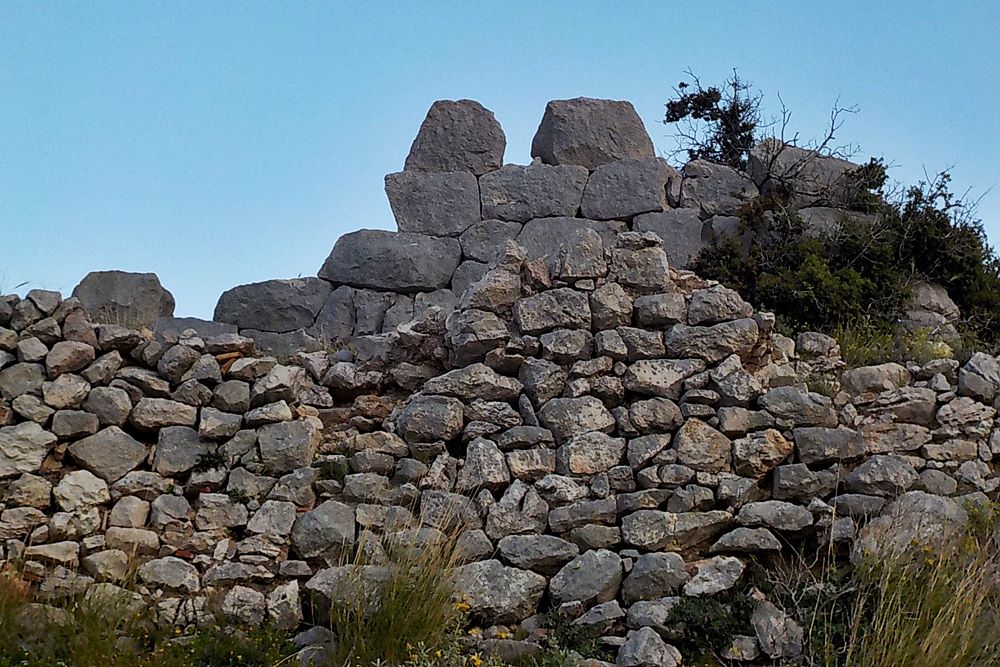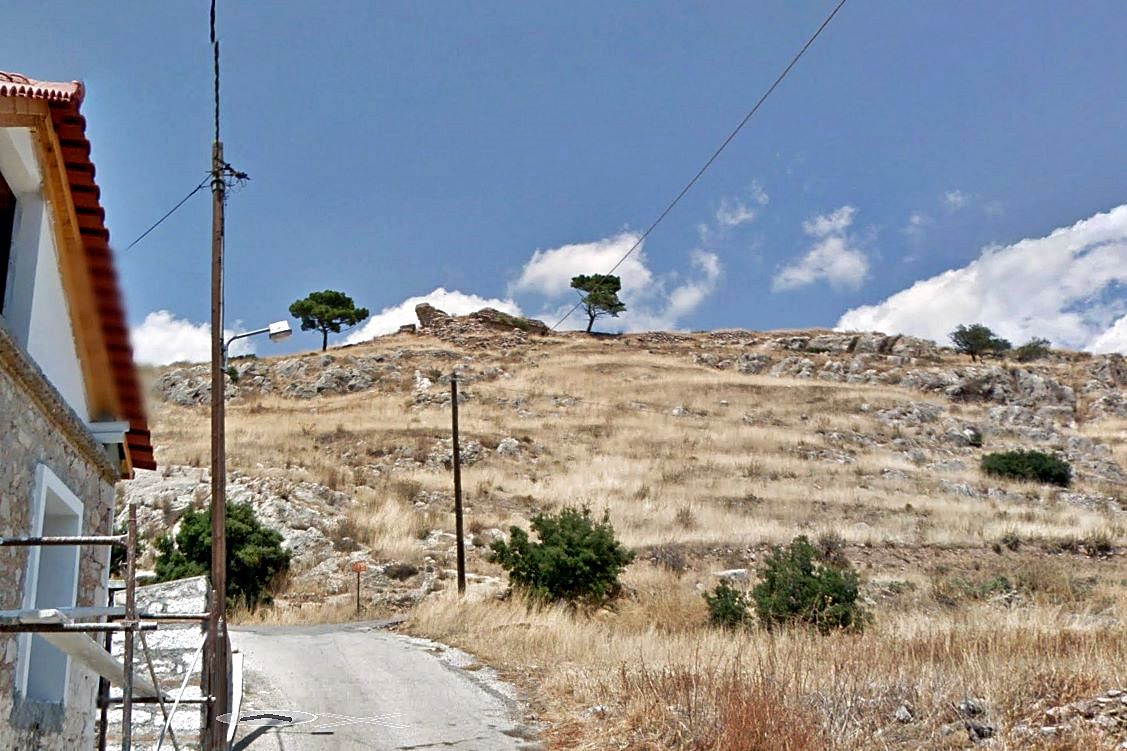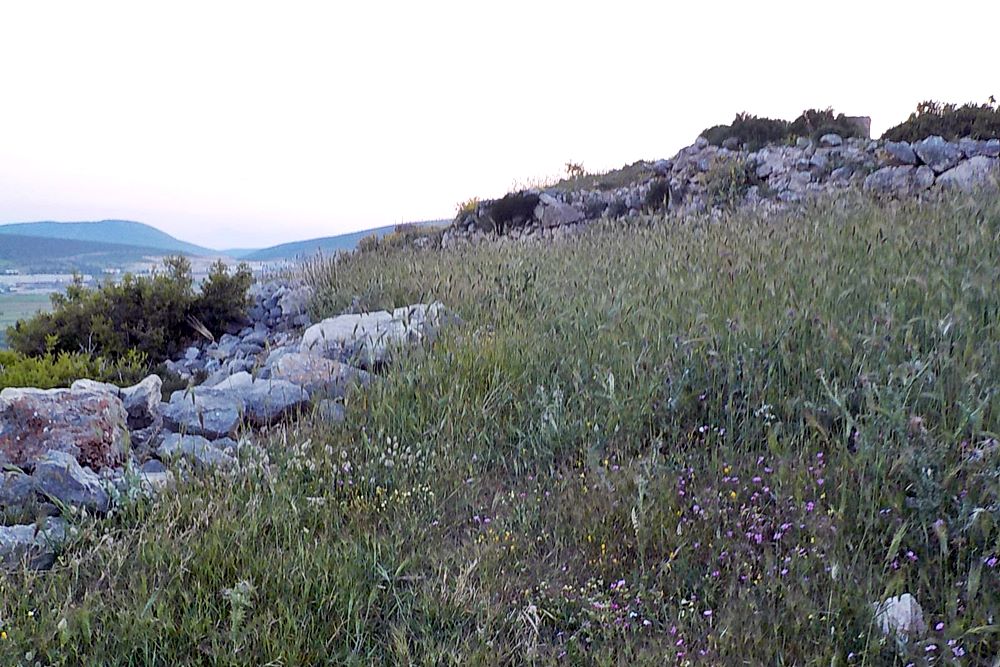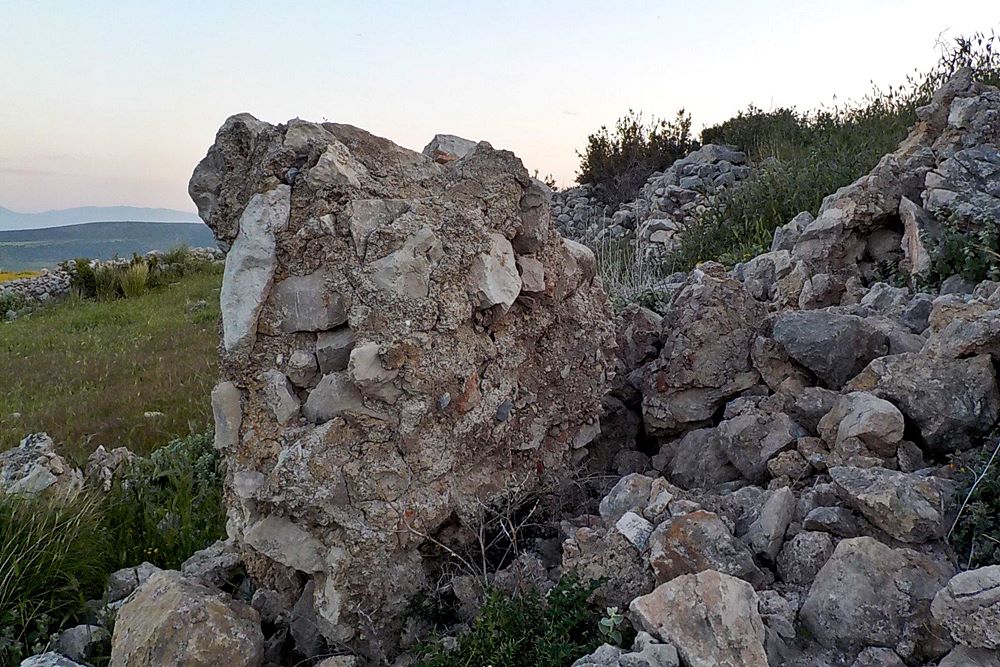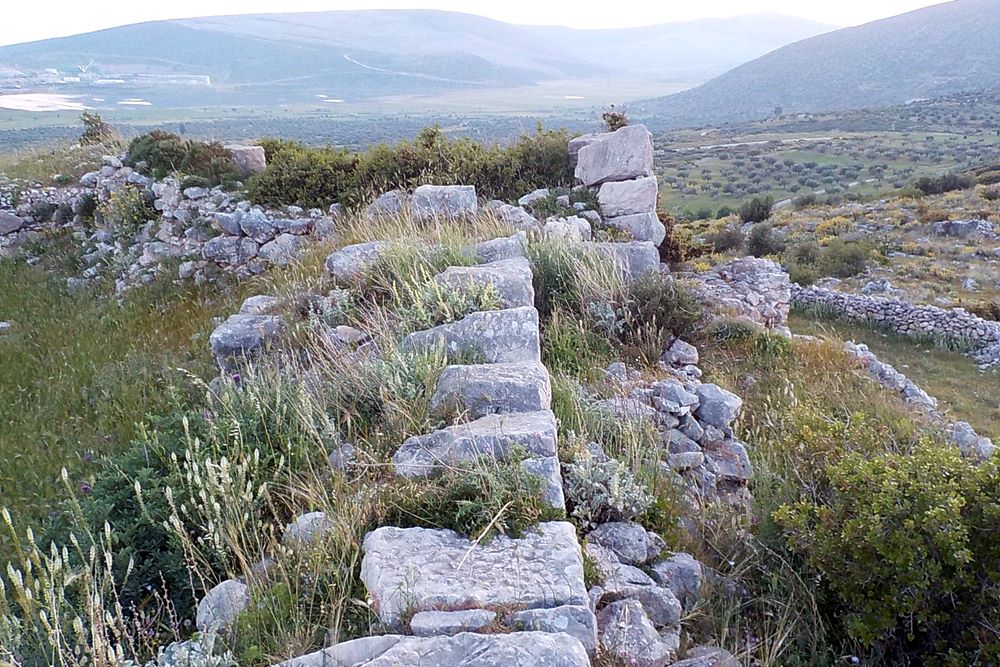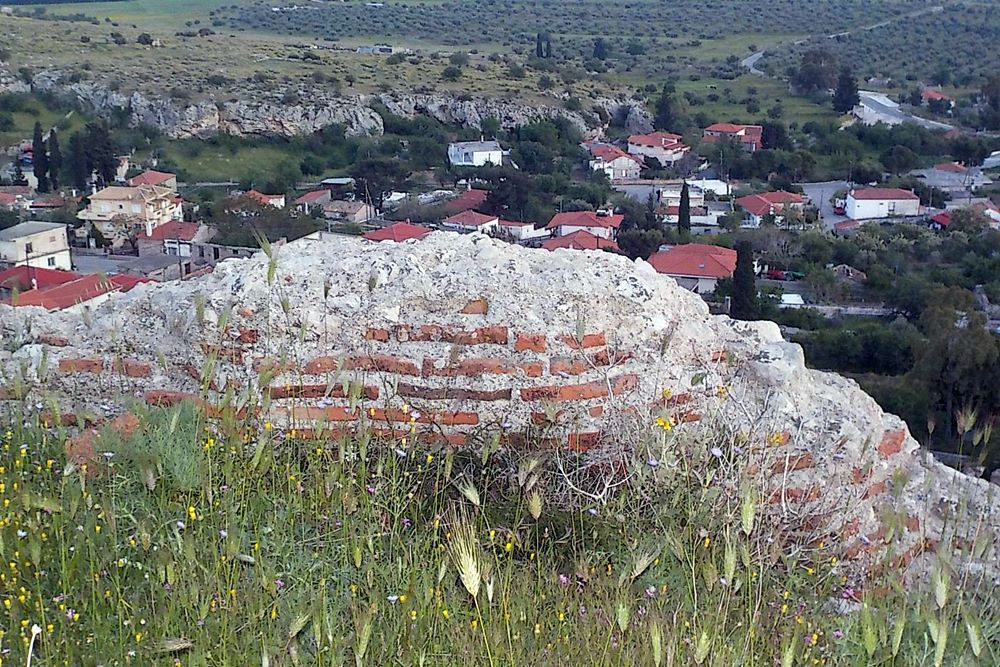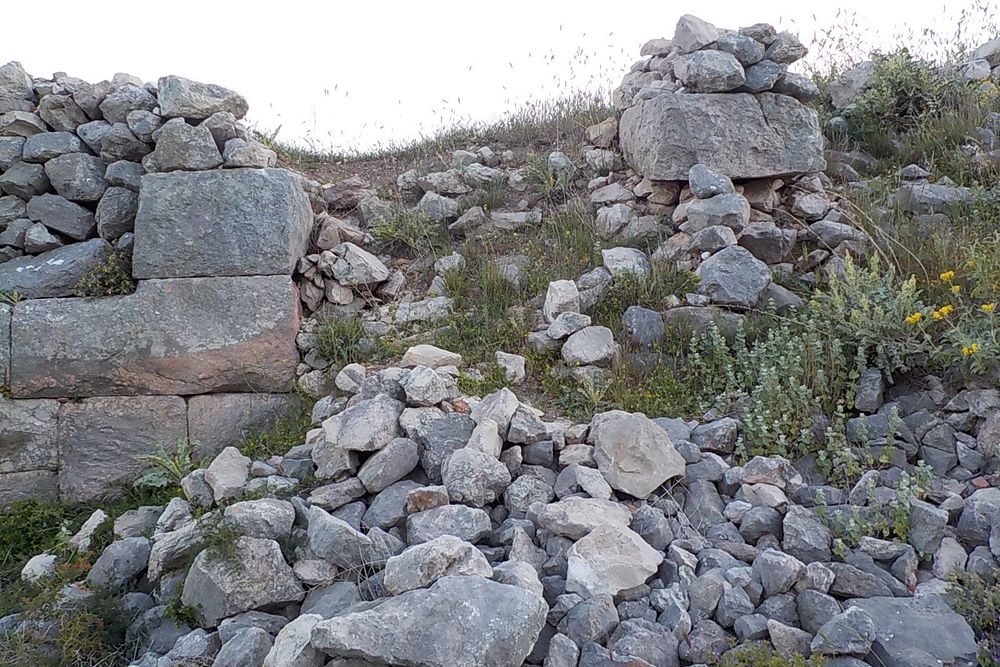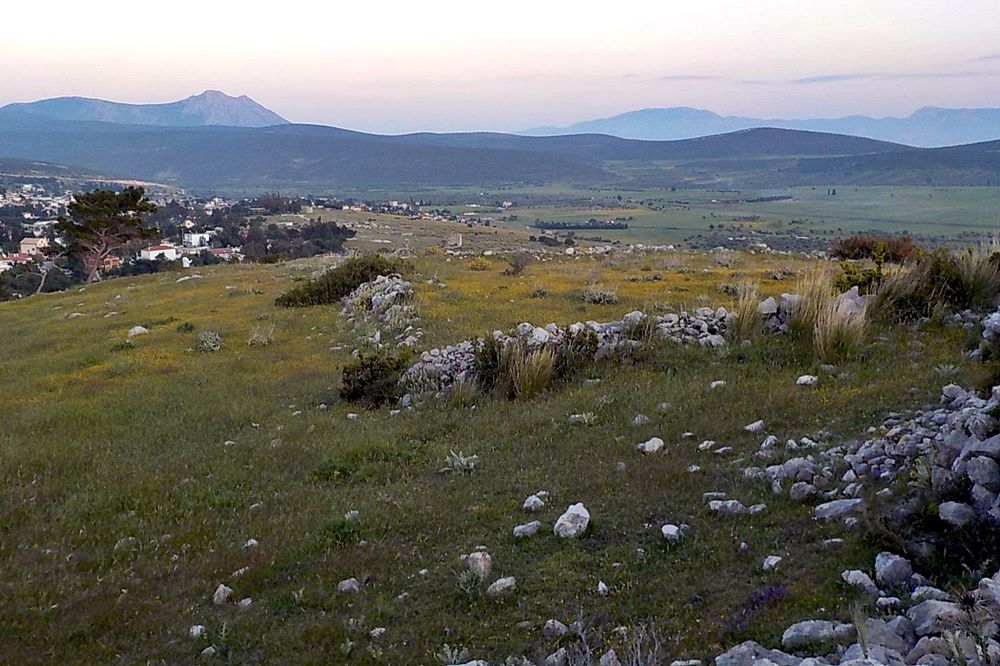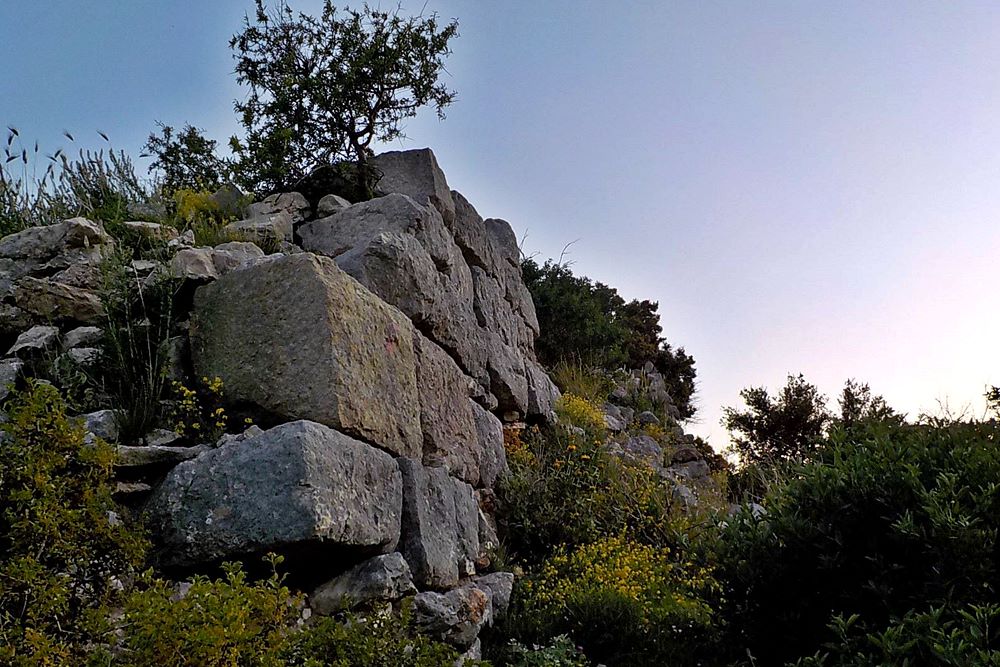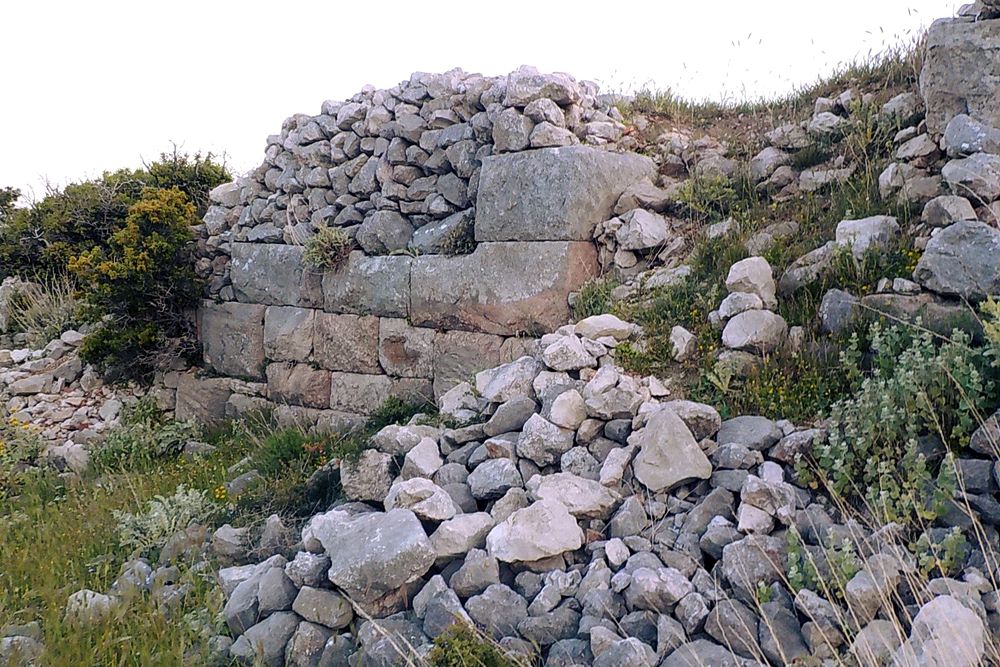Thisvi, Thebes, Boeotia,Central Greece
Paliokastro of Thisvi
| Location: |
| On the acropole of the ancient Thisvi, north of the modern village |
| Region > Prefecture: | 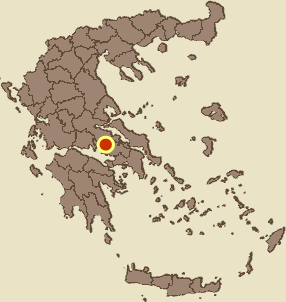 |
| Central Greece Boeotia | |
| Municipality > Town: | |
| City of Thebes • Thisvi | |
| Altitude: | |
|
Elevation ≈ 210 m (Relative Height≈40 m) |
| Time of Construction | Origin | |
| Various periods | ANCIENT |
|
| Castle Type | Condition | |
| Ancient City |
In Ruins
|
Remains of an ancient citadel with later additions in various periods on the hill north of the village of Thisvi in Boeotia.
History
Thisvi was an ancient Boeotian city that was in the same place as the current settlement. Homer mentions it among the cities that participated in the Trojan War. In the ancient classical period, it was a prosperous city where there was a famous temple of Artemis. According to Pausanias, the city took its name from the nymph Thisvi
The city is also mentioned by Strabo.
The ruins of two fortified citadels are preserved in Thisvi. The oldest, which is the subject of this page, is located on the hill north of the modern village where it was the original location of the ancient city. This is Paleokastro or Ano Akropoli, on the walls of which at least four construction phases are visible (which may have been six). The construction phases start from the Archaic period and reach up to the Byzantine times. Which means that the acropolis was in constant use from antiquity to the Middle Byzantine and probably the Late Byzantine period.
In Thisvi there is also the Lower Acropolis, or Neokastro, which is relatively younger. It was created during the Hellenistic period and remained in use for many centuries, at least until the Frankish occupation. From the lower acropolis, two towers with medieval use are presented in Kastrologos: the ancient tower of Thisvi and the circular tower of Thisvi.
The historical sources about the Byzantine Thisvi are scarce. It seems that its ancient name was in use until the Early Christian times, while later it was forgotten. At the end of the Late Byzantine period, the name “Kakosi” appears for the first time, which was preserved during the Tourkokratia and lasted until 1915, when the village was renamed again Thisvi. Regardless of this, the uninterrupted inhabitation of the area during the Middle and Late Byzantine period is certain.
Today it is believed that the Byzantine name of Thisvi was Kastorion which was the birthplace of a local saint (Osios Loukas) and an episcopal see during the late Byzantine period.
Structure, Fortification & Buildings
The ancient walls of Palaiokastro of Thisvi (of the Upper Acropolis) have been repaired during the late Roman period with additions in which semi-processed stones and mortar have been used. Some sections have even later additions, while a square tower in the southwest corner seems to have been built much later, probably during the Frankish occupation.
However, the fortification is largely damaged and is preserved at a low height.
| First entry in Kastrologos: | October 2021 |
Sources
- Research and presentation by Yohannes Dedes
- Photos from the Facebook page Thisvi Village Viotia Greece / Θίσβη Βοιωτία Ελλάδα
- Archie Dunn, University of Birmingham, The Survey of Thisve (Byzantine Kastorion and Multiperiod Complex of Sites): 2007–2009
- Βoλτυράκη Ελευθερία , άρθρο στο ΙΔΡΥΜΑ ΜΕΙΖΟΝΟΣ ΕΛΛΗΝΙΣΜΟΥ - Θίσβη / Καστόριον (Βυζαντινή περίοδος)
|
|
| Access |
|---|
| Entrance: |
| Free access |



